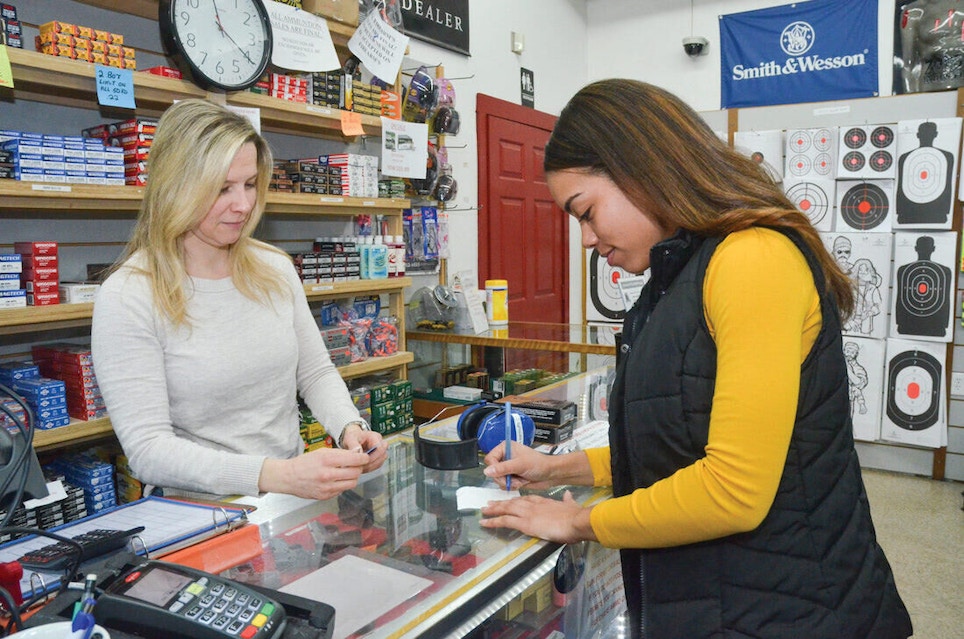As most gun dealers already know, the National Firearms Act regulates the purchase and transfer of certain firearms — such as machine guns — and requires that both retailers and purchasers fill out forms beyond the 4473. This segment of the market is increasing, as is the number of retailers who handle these firearms.
The transfer and sale of firearms governed by NFA is more complex than the transfer and sale of regular firearms.
“It requires extra paperwork,” says NSSF consultant Harry McCabe. “In order to successfully market these firearms, the retailer must be able to communicate with their customers that it’s going to take a long time to get the transfer approved. They’re just not going to be able to come in, put down their money, and walk out the door with a silencer.”
One of the basic things that retailers need to know, McCabe says, is that all NFA firearms also are GCA (Gun Control Act of 1968) firearms, and all GCA requirements must be met. In addition, they may only be sold by FFLs who are qualified to deal in NFA firearms.
“Another basic thing that retailers need to know is that all firearms regulated by the NFA are registered with ATF through the current possessor,” adds fellow NSSF consultant Wally Nelson.
This means that paperwork has been filed with ATF and approved by ATF to allow the transfer of those firearms to the transferee, or purchaser.
NFA-Related Forms
“All transfers after the initial registration by the manufacturer or importer must be accomplished by submitting specific NFA forms to ATF for approval,” McCabe says. “There are a variety of forms used for the registration and transfer of NFA firearms.”
One of these forms is a Form 2, which is a notice of the manufacture or import of NFA firearms, which is filed with ATF.
“That allows ATF to enter them into the National Firearms Registration and Transfer Record, the NFRTR,” Nelson says.
Then there’s a Form 3, which is used to transfer NFA firearms between FFLs who pay a Special Occupational Tax under the NFA.
“The Special Occupational Tax, SOT, is a tax imposed on manufacturers, importers and dealers who want to trade in NFA firearms,” Nelson says. “They have to pay a separate tax to the government every year.” As the name implies, it’s a tax on the occupation of dealing in NFA firearms.
“Because they pay that tax, and they have Federal Firearms Licenses, they are able to transfer firearms between each other using a Form 3 and there’s no tax assessed,” Nelson says. “But, when an NFA firearm is transferred to an individual, a trust, or an FFL who has not paid Special Occupational Tax, there is a $200 transfer tax that is paid on each individual firearm that is transferred from the current possessor to a new transferee.”
Increasing Demand
The demand for NFA firearms, particularly silencers, is very high and that demand is increasing, Nelson says.
“There is an almost insatiable demand for silencers, which is causing the companies that manufacture them to manufacture more,” he says. “The number of silencers is up phenomenally over the last 10 to 15 years.”
Many states have legalized hunting with silencers, which has contributed to this increase. That has, in turn, helped bring about the increase in the number of FFLs handling NFA firearms.
Some Common Errors
Retailers who sell NFA firearms make several common errors on the forms they are required to file. One of the errors they make is on the fingerprint card that goes with transfers to end users.
“The person who is receiving the firearm has to be photographed, fingerprinted, and have a fingerprint-based background check run on them with the FBI,” Nelson says. “One of the most common errors is the failure to properly complete the fingerprint card.”
Some other common mistakes include the retailer failing to submit the proper photographs, forgetting to sign the form or even just forgetting to include the tax payment.
“All of those things will get your application delayed,” Nelson says. “Even if you submit it perfectly the first time, it will take 8 to 9 months to get approved, so you want to make sure that you’re as accurate as you can possibly be; double and triple check it so it doesn’t get bounced back and go to the end of the line again.”
State of Residence
Nelson says he advises retailers to ask a customer purchasing any product regulated by NFA how long he or she plans to live in the state the retailer is in.
“Make sure they’re going to be living in your state for the next year,” he says. “If they move out of state while this process takes place, they’re not going to get the firearm. The firearm can only be transferred by the dealer to a resident in the state where their business is. This is particularly a problem with military personnel.”
In other words, if the customer moves out of state, he or she will have to start the process over with a dealer in the state where they’ve moved.
Nelson and McCabe covered all these topics, as well as upcoming changes in how NFA guns are handled, in more detail during an October webinar for the NSSF. The full webinar is available through SHOT University Online.






